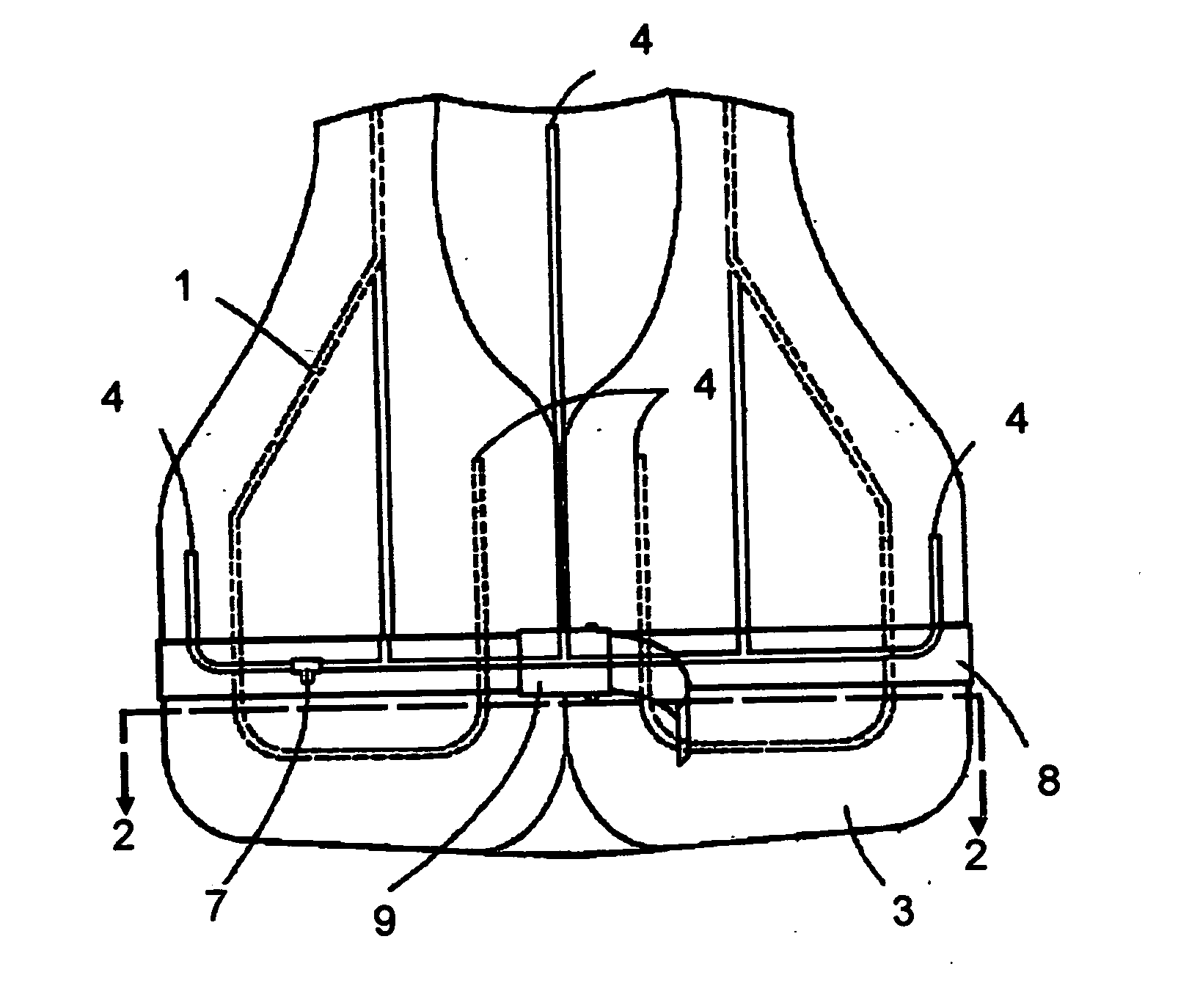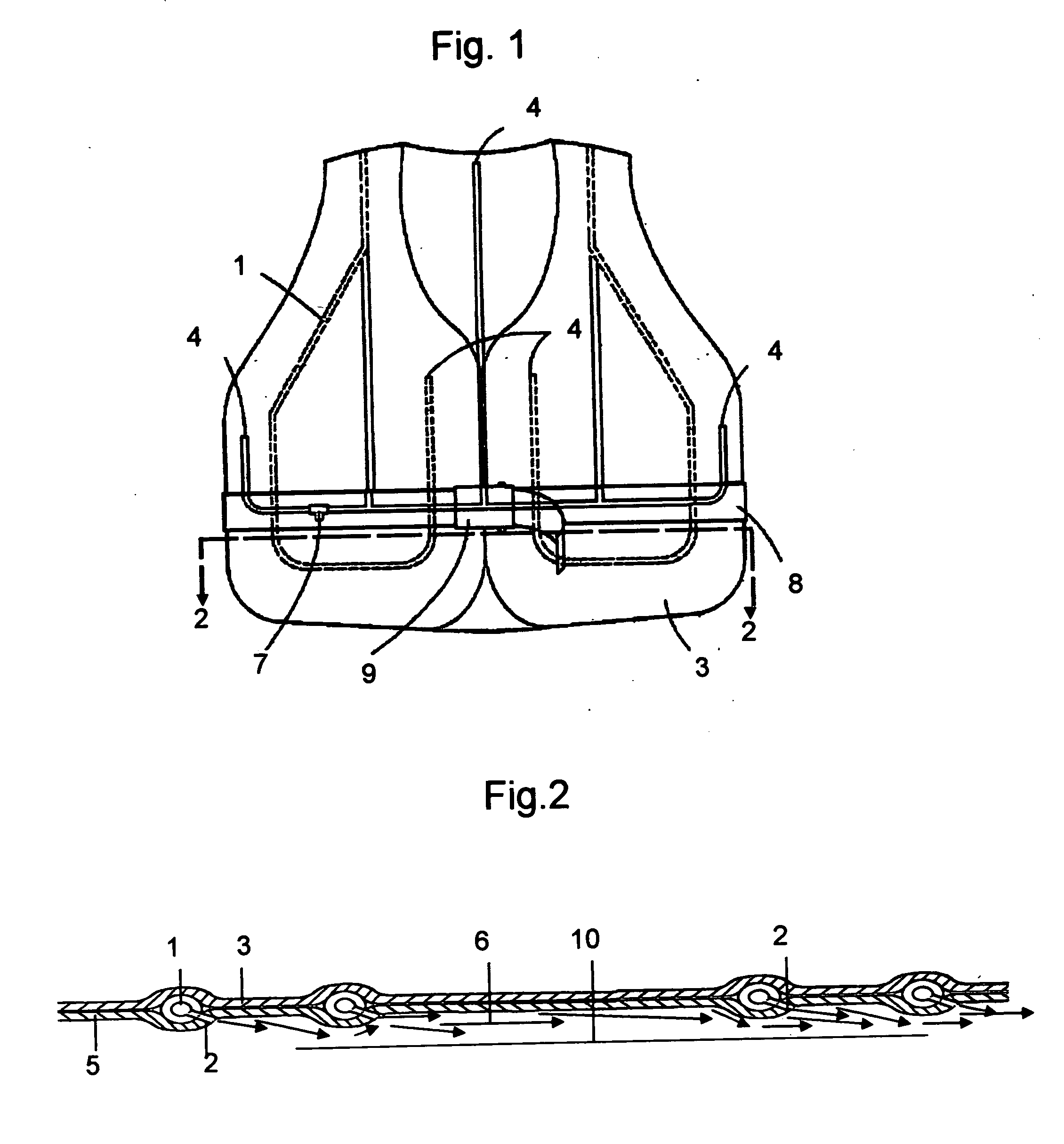Airvest human body cooling apparatus
- Summary
- Abstract
- Description
- Claims
- Application Information
AI Technical Summary
Benefits of technology
Problems solved by technology
Method used
Image
Examples
Embodiment Construction
(s)
[0017] The preferred vest (FIG. 1) would be an air expansion vest with pressureized tubing 1 where the orientation of the pressurized tubing vent nozzles 2 (FIG. 2) or holes and a wind tight 3 covering would allow coanda enhanced evaporative cooling and cooling through the drop in air pressure and consequental drop in the temperature of the cooling air. The the pressurized tubes would be capped on the ends 4 (FIG. 1) to maintain back pressure in the tubing. These several significant improvements that in aggregate would significantly change the cooling method by utilizing the natural dryness of compressed air and its ability to phase shift and evaporate the moisture present on the surface of the body 10 (FIG. 2) and markedly increase the efficiency of this vest over others. First the holes 2 (FIG. 2) drilled in the tubes sewn into the vest would be aligned almost parallel to the surface of the body 10 (FIG. 2) rather than perpendicular. The outer shell would be comprised of a flam...
PUM
 Login to View More
Login to View More Abstract
Description
Claims
Application Information
 Login to View More
Login to View More - R&D
- Intellectual Property
- Life Sciences
- Materials
- Tech Scout
- Unparalleled Data Quality
- Higher Quality Content
- 60% Fewer Hallucinations
Browse by: Latest US Patents, China's latest patents, Technical Efficacy Thesaurus, Application Domain, Technology Topic, Popular Technical Reports.
© 2025 PatSnap. All rights reserved.Legal|Privacy policy|Modern Slavery Act Transparency Statement|Sitemap|About US| Contact US: help@patsnap.com


